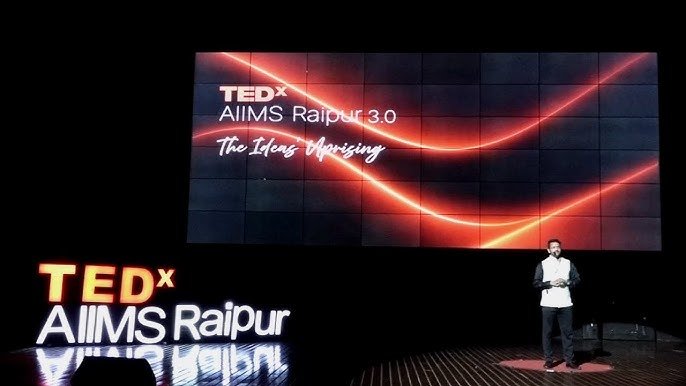AIIMS Raipur Anatomy Conference Unveils Revolutionary New Tech Transforming Medical Education
In the heart of Chhattisgarh, the All India Institute of Medical Sciences (AIIMS) Raipur recently hosted an anatomy conference that promised to change the landscape of medical education forever. With advancements in technology rapidly evolving, the conference aimed to explore how cutting-edge innovations can reshape anatomy education for medical students and professionals. Attendees gathered from various corners of the country, filled with anticipation for the insights and revelations that would unfold during the event, aptly titled the “AIIMS Raipur Anatomy Conference with New Tech.”
As the sun rose over the sprawling AIIMS campus, attendees found themselves immersed in an environment rich with intellectual curiosity and enthusiasm. The conference brought together esteemed anatomists, educators, and tech innovators, all eager to share their knowledge and experiences regarding the integration of technology in teaching anatomy. Among the highlights of the event were virtual reality (VR) simulations, augmented reality (AR) tools, and advanced 3D modeling techniques, each demonstrating the power of technology in enhancing the educational experience.
Dr. Suresh Mehta, a prominent figure in the field of anatomical sciences and one of the principal organizers of the conference, opened the event with an inspiring keynote address. He spoke passionately about the potential of new technologies to enhance the study of anatomy, emphasizing how they could lead to a deeper understanding of the human body. “With these innovations, we can bring anatomy to life in ways we never thought possible,” he said, captivating the audience with his vision for the future of medical education.
One of the most talked-about innovations presented during the conference was the use of virtual reality in anatomy education. Participants had the chance to engage with VR headsets that simulated immersive experiences of human anatomy. Students could virtually dissect a human body, manipulating organs with their hands as if they were in a real-life lab setting. The feedback from participants was overwhelmingly positive, with many expressing that this technology helped them grasp complex anatomical structures in a far more engaging manner than traditional methods.
In addition to the VR experiences, augmented reality applications were also showcased. Attendees could use tablets and smartphones to overlay anatomical information onto real-world objects, enhancing their learning environment. This technology not only sparked interest among students but also received nods of approval from seasoned professionals who understood the impact such tools could have on the teaching process. Dr. Aarti Kumar, a senior lecturer in anatomy, remarked, “These tools make learning anatomy more interactive and personalized. They allow students to visualize concepts in real-time, leading to better retention of information.”
Another fascinating aspect of the conference was the presentation of advanced 3D modeling techniques. One session featured a demonstration of software that enables educators to create detailed 3D models of anatomical structures, which students could manipulate on-screen. This method presents a remarkable opportunity to explore anatomy from various angles, providing an enriched understanding of spatial relationships that textbooks simply cannot convey. As Dr. Ravi Chawla, an expert in digital anatomy, noted, “3D modeling bridges the gap between theoretical knowledge and practical application, making it an invaluable resource for both teaching and learning.”

With the growing emphasis on interdisciplinary collaboration, the conference also touched upon the role of technology in fostering partnerships between medical schools and tech companies. Experts emphasized the need for a close relationship between educators and technologists to ensure that the tools developed truly meet the needs of medical students. During a lively panel discussion, industry representatives shared their insights on future collaborations, highlighting how this synergy could lead to even more transformative educational experiences.
As the conference progressed, attendees participated in hands-on workshops that allowed them to experiment with the newly introduced technologies firsthand. Many felt a sense of exhilaration as they navigated the complexities of the human body using the latest tools available. The atmosphere was electric, with students and educators alike exchanging ideas and discussing how they could implement these innovations in their own curricula.
The AIIMS Raipur anatomy conference with new tech also included a segment dedicated to addressing potential challenges associated with integrating technology into anatomy education. Experts engaged in thoughtful discussions about the importance of maintaining a balance between technological advancements and traditional teaching methods. Dr. Mehta emphasized that while technology is a powerful tool, it should enhance, not replace, the fundamental principles of anatomy education. He urged participants to think critically about how they would integrate these tools into existing programs, ensuring that the essence of learning anatomy remains intact.
As the event drew to a close, participants reflected on the wealth of knowledge shared over the past few days. For many, the conference was not just a gathering of professionals but a pivotal moment in the evolution of medical education. The potential for innovation felt boundless, and attendees left AIIMS Raipur with renewed enthusiasm and a commitment to incorporate new technologies into their teaching practices.
In an era where technology is rapidly transforming every facet of life, the AIIMS Raipur anatomy conference with new tech highlighted the importance of adapting medical education to meet contemporary needs. With the commitment of educators, the enthusiasm of students, and the support of technological innovators, the future of anatomy education is bright. As the participants exited the venue, they carried with them the conviction that the fusion of technology and education will lead to a more profound understanding of human anatomy, ultimately benefiting future generations of medical professionals.












Leave a comment